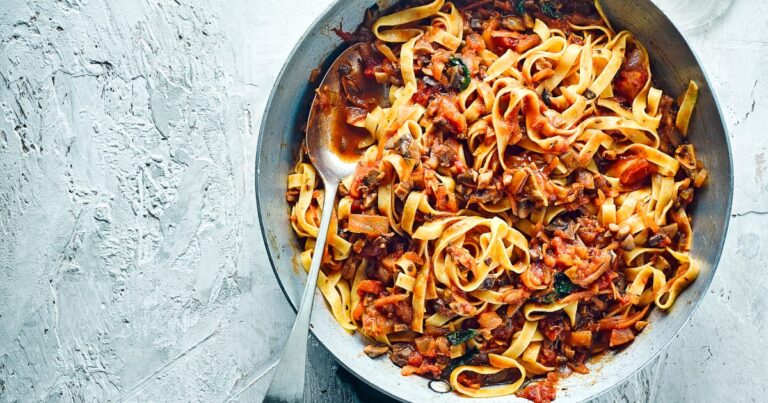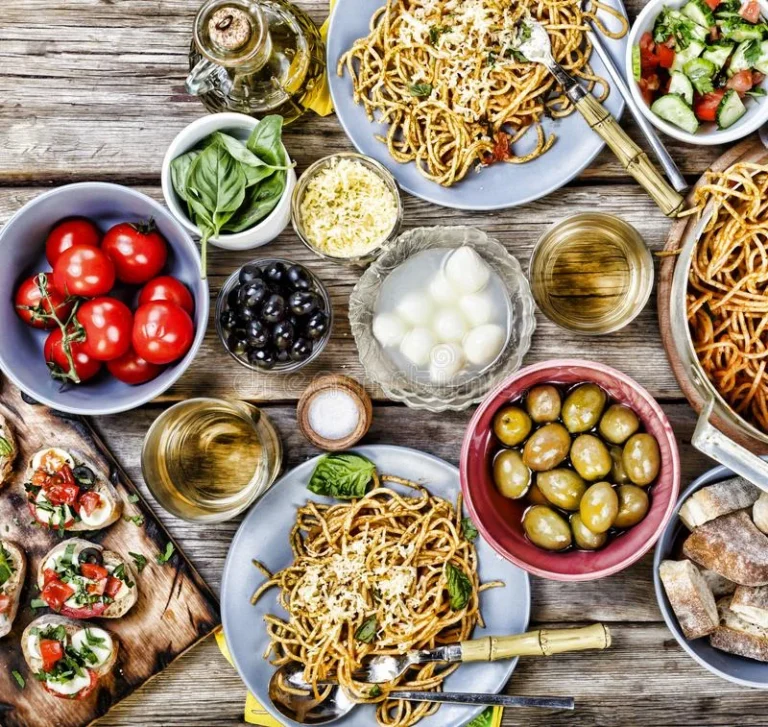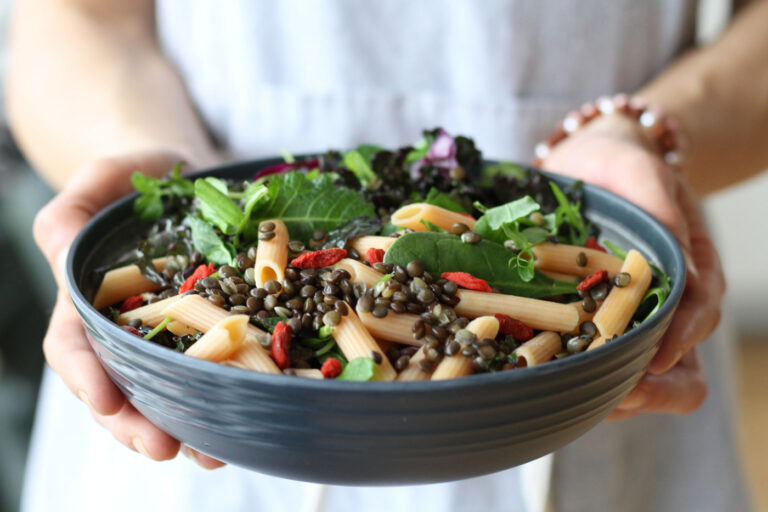Italian cuisine is renowned worldwide for its rich flavors, fresh ingredients, and vibrant colors. From delectable pastas to sumptuous desserts, Italian cooking encompasses a diverse array of dishes that cater to every palate. However, amidst the plethora of mouthwatering options, vegetarian recipes stand out for their simplicity, freshness, and nutritional value.
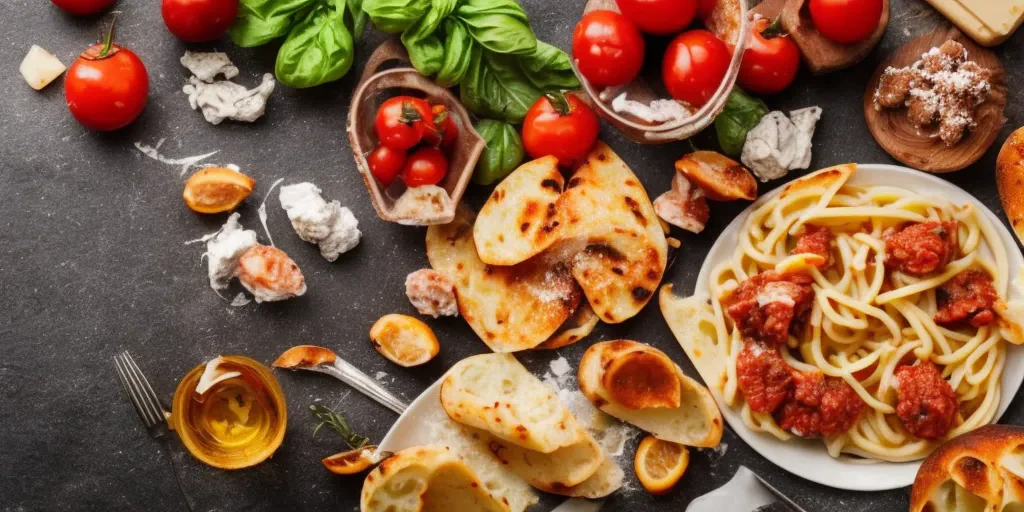
What are Italian summer vegetarian recipes?
Imagine yourself in a quaint Italian garden, surrounded by the aroma of fresh herbs and the vibrant hues of summer vegetables. Italian cuisine, especially during the summer, wonderfully embraces vegetarianism, creating dishes that are both nourishing and a celebration of the season’s generosity.
Picture plates filled with the rich colors of bell peppers, zucchinis, and tomatoes, all bursting with flavor. These recipes aren’t just about eating; they’re an experience, connecting you with the simplicity and purity of nature’s offerings.
From the tangy freshness of a Caprese salad to the comforting embrace of a homemade pesto pasta, every bite is a testament to the beauty of summer in Italy, crafted with care and meant to be savored under the sun’s gentle warmth. Let’s prepare to explore these dishes, each a homage to the earth’s abundance.
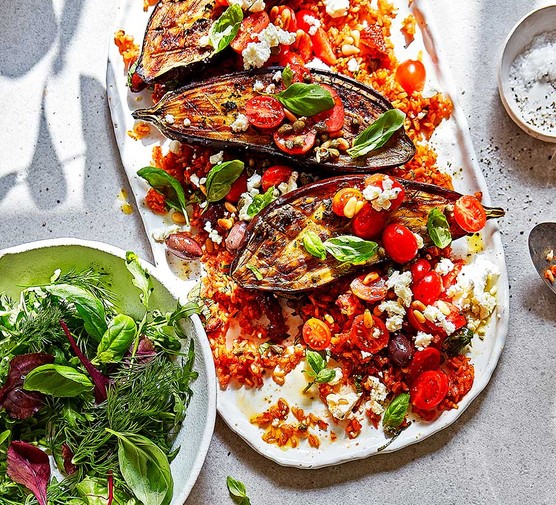
What do Italian eat in summer?
In summer, Italians embrace the bounty of the season with dishes that highlight fresh, vibrant ingredients. Meals often start with antipasti like bruschetta topped with ripe tomatoes and basil or a refreshing Caprese salad with mozzarella, tomatoes, and fresh basil.

Antipasti (Appetizers):
- Bruschetta with tomatoes and basil – Toasted bread rubbed with garlic and topped with juicy, ripe tomatoes and fresh basil.
- Caprese Salad – Slices of fresh mozzarella and ripe tomatoes, adorned with basil leaves and a drizzle of extra virgin olive oil.
Primi (First Courses):
- Pasta with fresh tomato sauce – Simple yet flavorful pasta tossed in a sauce made with garden-fresh tomatoes and basil.
- Risotto with seasonal vegetables – Creamy risotto cooked slowly with a medley of summer vegetables, like zucchini and bell peppers.
Secondi (Main Courses):
- Grilled Vegetables with olive oil – A variety of vegetables grilled to perfection and seasoned with herbs and olive oil.
- Seafood Pasta or Grilled Seafood – Delicate pasta with seafood or freshly grilled seafood, celebrating Italy’s coastline.
Contorni (Side Dishes):
- Panzanella – A Tuscan bread and tomato salad, a refreshing mix of stale bread, ripe tomatoes, cucumber, and onions, dressed with olive oil and vinegar.
Dolci (Desserts):
- Fresh Fruit Salads or Peaches with Wine – Light and sweet, the perfect end to a summer meal.
- Gelato or Sorbetto – A scoop (or two) of Italy’s famous frozen desserts, in a myriad of summer fruit flavors.
Bevande (Beverages):
Aperol Spritz or Chilled White Wine – The quintessential summer drinks, refreshing and cool, perfect for sipping on a warm evening.
Each course is designed to showcase the freshness and simplicity of Italian summer ingredients, creating a meal that’s as delightful as a sunny day in Italy.
Embracing the Abundance of Summer Produce
As the warmth of summer envelops the Italian countryside, the bounty of seasonal produce becomes a focal point in culinary creations. From ripe tomatoes to fragrant basil, summer vegetables offer a kaleidoscope of flavors that inspire chefs and home cooks alike.
Embracing the essence of Italian summer, vegetarian recipes celebrate the vibrant colors and distinctive tastes of the season’s harvest. To embrace the abundance of summer produce, follow these steps:
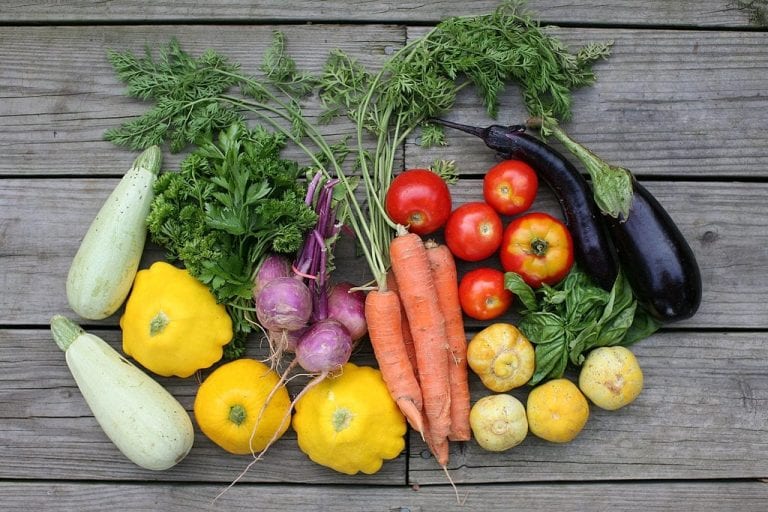
- Visit Local Farmers’ Markets: Explore your local farmers’ markets to discover a wide variety of fresh fruits and vegetables that are in season during the summer months. From juicy tomatoes to crisp cucumbers, you’ll find an abundance of colorful produce to inspire your culinary creations.
- Grow Your Own Garden: Consider planting a garden in your backyard or on your balcony to enjoy the freshest produce right at home. Choose vegetables and herbs that thrive in the summer heat, such as tomatoes, zucchini, basil, and peppers.
- Experiment with Different Recipes: Take advantage of the seasonal bounty by experimenting with different recipes that highlight summer produce. Try making refreshing salads with heirloom tomatoes, cucumber, and watermelon, or grill up some zucchini and eggplant for a flavorful side dish.
- Preserve the Harvest: To enjoy summer produce year-round, consider preserving the harvest through techniques such as canning, freezing, or drying. Make homemade salsa with ripe tomatoes and peppers, or freeze fresh berries to enjoy in smoothies and desserts throughout the year.
- Support Local Farmers: By purchasing locally grown produce, you not only support small-scale farmers in your community but also enjoy the freshest and most flavorful ingredients available. Look for community-supported agriculture (CSA) programs or farm-to-table restaurants that source their ingredients locally.
- Get Creative in the Kitchen: Don’t be afraid to get creative in the kitchen and experiment with new flavor combinations using summer produce. Blend up a refreshing gazpacho soup with ripe tomatoes, cucumbers, and bell peppers, or toss together a colorful pasta salad with fresh herbs and vegetables.
- Share the Bounty: Share the abundance of summer produce with friends and family by hosting a backyard barbecue or potluck dinner. Encourage guests to bring dishes made with seasonal ingredients, and enjoy a feast together while soaking up the summer sunshine.
By embracing the abundance of summer produce, you’ll not only enjoy delicious and nutritious meals but also support local farmers and celebrate the flavors of the season.
Savoring the Simplicity of Caprese Salad
One iconic dish that epitomizes the essence of Italian summer cuisine is Caprese Salad. This classic recipe features ripe tomatoes, fresh mozzarella cheese, fragrant basil leaves, and a drizzle of extra virgin olive oil. The simplicity of ingredients allows the natural flavors to shine, creating a dish that is both refreshing and satisfying. Whether enjoyed as an appetizer or a light main course, Caprese Salad captures the essence of summer on a plate. To savor the simplicity of Caprese Salad, follow these steps:
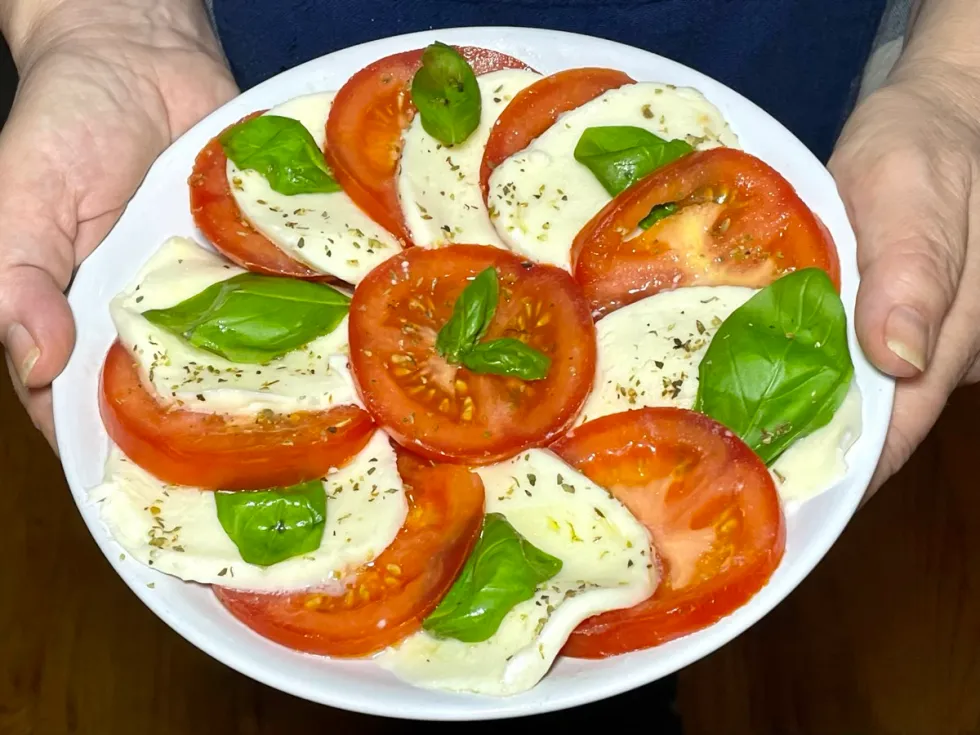
- Gather Your Ingredients: Collect ripe tomatoes, fresh mozzarella cheese, basil leaves, extra virgin olive oil, balsamic vinegar, salt, and pepper.
- Slice the Tomatoes and Cheese: Slice the tomatoes and fresh mozzarella cheese into uniform slices, about ¼ inch thick. Arrange them alternately on a serving platter, overlapping slightly.
- Layer with Basil Leaves: Wash and dry the basil leaves, then layer them between the slices of tomato and mozzarella cheese. This adds a burst of fresh flavor and vibrant color to the salad.
- Drizzle with Olive Oil and Vinegar: Drizzle the assembled salad with extra virgin olive oil and balsamic vinegar, ensuring each slice is lightly coated. The olive oil adds richness, while the vinegar provides a tangy contrast.
- Season with Salt and Pepper: Sprinkle the salad with a pinch of salt and freshly ground black pepper to taste. This enhances the flavors of the tomatoes and cheese and adds a subtle seasoning to the dish.
- Serve and Enjoy: Serve the Caprese Salad immediately, allowing the flavors to meld together. Garnish with additional basil leaves if desired, and enjoy the simplicity and freshness of this classic Italian dish.
Indulging in the Richness of Eggplant Parmesan
Another beloved vegetarian dish that takes center stage during the summer months is Eggplant Parmesan. Layers of thinly sliced eggplant are coated in breadcrumbs, fried to perfection, and then baked with marinara sauce and melted cheese. The result is a hearty and flavorful dish that showcases the versatility of eggplant and the richness of Italian flavors. Whether served as a main course or alongside pasta, Eggplant Parmesan is sure to delight vegetarians and omnivores alike. To indulge in the richness of Eggplant Parmesan, follow these steps:
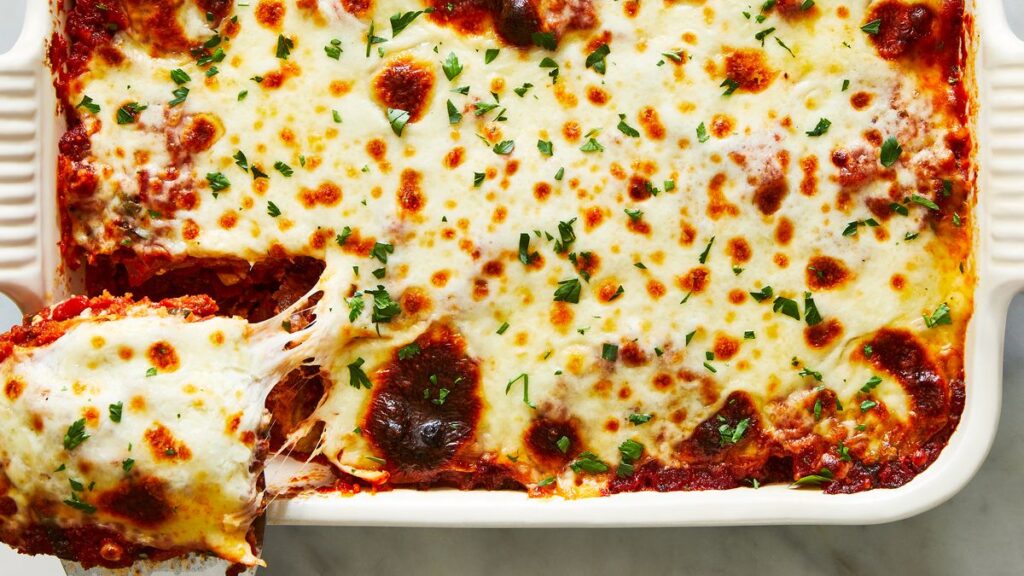
- Prepare the Eggplant: Start by slicing the eggplant into thin rounds, about ¼ inch thick. Sprinkle the slices with salt and let them sit for about 30 minutes to draw out any excess moisture. This step helps prevent the eggplant from becoming soggy during cooking.
- Coat the Eggplant: After the eggplant slices have released their moisture, pat them dry with paper towels. Dip each slice into beaten eggs, then coat them in breadcrumbs seasoned with salt, pepper, and grated Parmesan cheese. Ensure each slice is evenly coated for maximum flavor and crunch.
- Fry the Eggplant: Heat olive oil in a large skillet over medium heat. Working in batches, fry the eggplant slices until golden brown and crispy on both sides, about 2-3 minutes per side. Transfer the fried eggplant to a plate lined with paper towels to drain any excess oil.
- Layer with Marinara Sauce and Cheese: Preheat your oven to 375°F (190°C). Spread a thin layer of marinara sauce in the bottom of a baking dish. Arrange a single layer of fried eggplant slices on top of the sauce, then spoon more marinara sauce over the eggplant. Sprinkle shredded mozzarella cheese and grated Parmesan cheese over the sauce.
- Repeat Layers: Continue layering the fried eggplant slices, marinara sauce, and cheese until you’ve used all the ingredients, finishing with a layer of cheese on top.
- Bake until Bubbly and Golden: Cover the baking dish with aluminum foil and bake in the preheated oven for 25-30 minutes, or until the cheese is melted and bubbly. Remove the foil and continue baking for an additional 5-10 minutes, or until the cheese is golden brown and slightly crispy.
- Serve and Enjoy: Once the Eggplant Parmesan is done baking, let it cool for a few minutes before serving. Garnish with fresh basil leaves and serve alongside your favorite pasta or crusty bread for a satisfying and indulgent meal.
Elevating Pasta with Fresh Pesto
Pesto, a fragrant sauce made from fresh basil, pine nuts, garlic, Parmesan cheese, and olive oil, is a staple of Italian cuisine. During the summer months, when basil is in abundance, Pesto Pasta takes center stage as a vibrant and flavorful dish.
Tossed with al dente pasta and garnished with cherry tomatoes and toasted pine nuts, Pesto Pasta is a celebration of summer’s bounty. The bright green hue of the pesto and the fresh flavors of the ingredients make it a standout dish that is both satisfying and nutritious. To elevate pasta with fresh pesto, follow these steps:
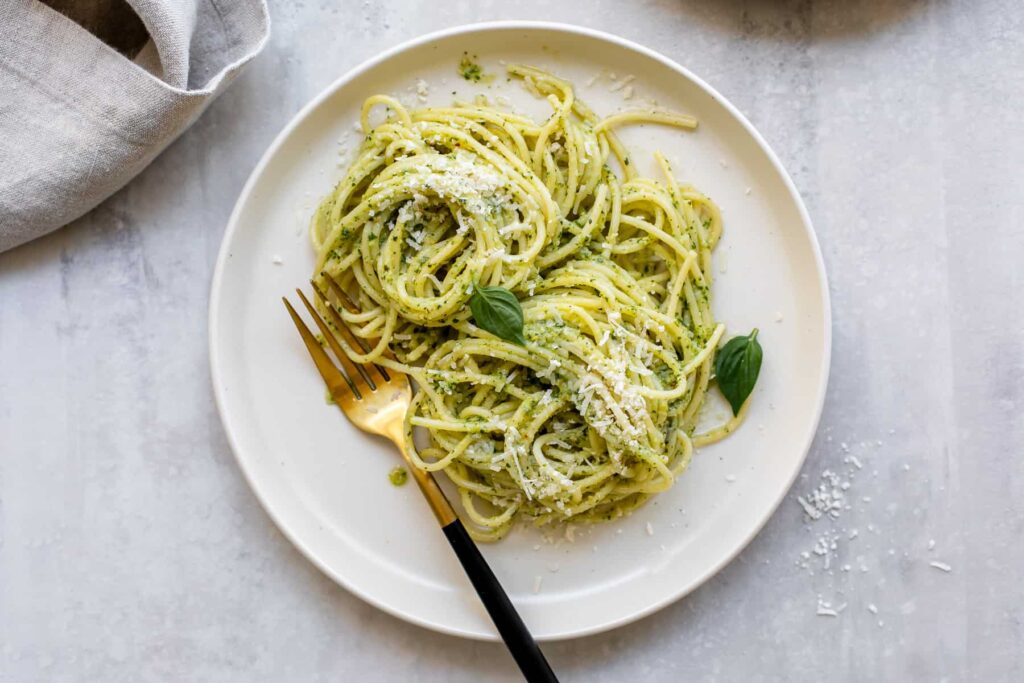
- Gather Your Ingredients: Collect fresh basil leaves, pine nuts, garlic cloves, Parmesan cheese, extra virgin olive oil, salt, pepper, and your choice of pasta.
- Prepare the Pesto Sauce: In a food processor or blender, combine the basil leaves, pine nuts, garlic cloves, and grated Parmesan cheese. Pulse until the ingredients are finely chopped and well combined.
- Add Olive Oil: With the food processor running, slowly drizzle in the extra virgin olive oil until the pesto reaches your desired consistency. You may need to stop and scrape down the sides of the bowl occasionally to ensure all the ingredients are evenly mixed.
- Season to Taste: Taste the pesto and season with salt and pepper to taste. Adjust the ingredients as needed to achieve the perfect balance of flavors.
- Cook the Pasta: Meanwhile, cook your choice of pasta according to the package instructions until al dente. Drain the pasta, reserving a small amount of the cooking water.
- Combine Pasta and Pesto: In a large mixing bowl, toss the cooked pasta with the freshly prepared pesto sauce until well coated. If the pasta seems too dry, add a splash of the reserved cooking water to loosen the sauce.
- Serve and Garnish: Transfer the pesto-coated pasta to serving plates or bowls. Garnish with additional grated Parmesan cheese and fresh basil leaves for an extra burst of flavor and color.
- Optional Additions: For added texture and flavor, consider adding toasted pine nuts, cherry tomatoes, or sautéed vegetables to the pasta before serving. You can also top the dish with a sprinkle of red pepper flakes for a hint of heat.
Delighting in the Freshness of Tomato Bruschetta

Tomato Bruschetta is a simple yet elegant dish that embodies the essence of Italian summer cuisine. Ripe tomatoes are diced and marinated with garlic, basil, olive oil, and balsamic vinegar, then spooned onto toasted bread slices.
The combination of juicy tomatoes, fragrant herbs, and tangy vinegar creates a burst of flavor with every bite. Whether served as an appetizer or enjoyed as a light lunch, Tomato Bruschetta is a perfect showcase for the vibrant flavors of summer produce.
Conclusion
In conclusion, Italian summer vegetarian recipes offer a delightful array of dishes that celebrate the bounty of the season. From refreshing salads to hearty pasta dishes, these recipes showcase the vibrant flavors and fresh ingredients that define Italian cuisine.
Whether you’re a vegetarian or simply looking to embrace the flavors of summer, these dishes are sure to delight your taste buds and transport you to the sun-drenched hills of Italy.
Disclosure: Our blog contains affiliate links to products. We may receive a commission for purchases made through these links. However, this does not impact our reviews and comparisons. We try our best to keep things fair and balanced, in order to help you make the best choice for you.


